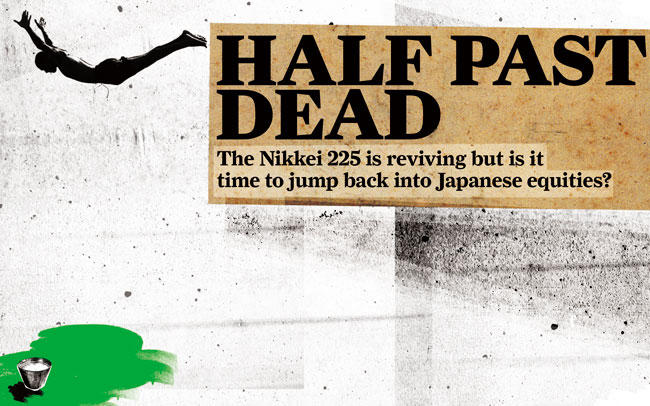About a year ago today, I published a weekly Nikkei outlook discussing whether the Nikkei was headed to 13,000 or back to 12,000. Suffice to say that much has happened since then. At the start of the new fiscal year today, the range in question is broader, 7,000 - 9,000, but obviously it is not any better (unless one has profited on the short side or had a timely exit). At any rate, investors might be excited since March was a particularly good month for equities.
The Nikkei 225 gave back 500+ points in the last two sessions of March, but the usual claims of year-end window-dressing were audible, since the N225 still managed to gain more than 11% for the month — the ascent was upwards of 18 percent through last Friday. The 11.4 percent return tied 1999 for the best March performance since at least 1991. That’s history. So what can we expect for April?
The last two Aprils have produced gains of 9.4 percent (2008) and 2.2 percent (2007) for the Nikkei 225. Both of those followed losses of approximately 1 percent in March. The last positive March in 2006 (7 percent) was followed by a 2.5 percent decline in April. Of bigger concern is the fact that the ensuing April to December periods for each of the past three years have been rather brutal: -31 percent (2008), -11.5 percent (2007), and +1 percent (2006). For those looking for a trade or a glimmer of hope, note that the N225 has closed higher two-thirds of the time in April over the past 18 years. However, the first day of trading is no indicator for the remainder of the month since up/down days are split 50:50. Lastly, know that the average monthly gain for April in the past 18 years is 1.3 percent and the median gain is 2.2 percent. By the way, the 11 percent March performance in 1999 was followed by a gain of more than 2 percent in April.
My assessment of Japanese equities in light of the domestic and global economy is still primarily negative. I continue to be of the opinion that the current trading level of the N225 reflects fair value. A simple way to play may be to consider the low-7,000 level as an area of support and a buying point, and the approach to 9,000 as an area of resistance and thus a selling point. Remember that the N225 closed the year in 2008 at 8,859. The 52-week low was back in late October at 6,994, but most recently on March 10, the Nikkei flirted with the 6,000 level again when it closed at 7,054. Keep in mind that the N225 is now down only 10 percent for the calendar year thanks to the March rally.
While it goes without saying that stocks are a “leading indicator” and will recover before the broader economy, the best thing to do is to be realistic. No need whatsoever to rush into equities. There are too many lingering uncertainties and the potential for even more doom and gloom. With all eyes seemingly on the U.S. (after all we got everyone into this mess), don’t put much faith in the longer-term efficacy of tweaking mark-to-market valuation or public-private investment schemes that rely on the “goodwill” of banks. Too many ifs would have to be realized before a meaningful amount of confidence could be restored and sustained.
More on this topic
Reasons For Today's Rally (Zero Hedge, 2/24/09)
The Trade that Hurts the Most (The Essentials of Trading, 2/2/09)
Read more on Nikkei 225 Index at Wikinvest
Blog:
Other posts by Steven Towns:







